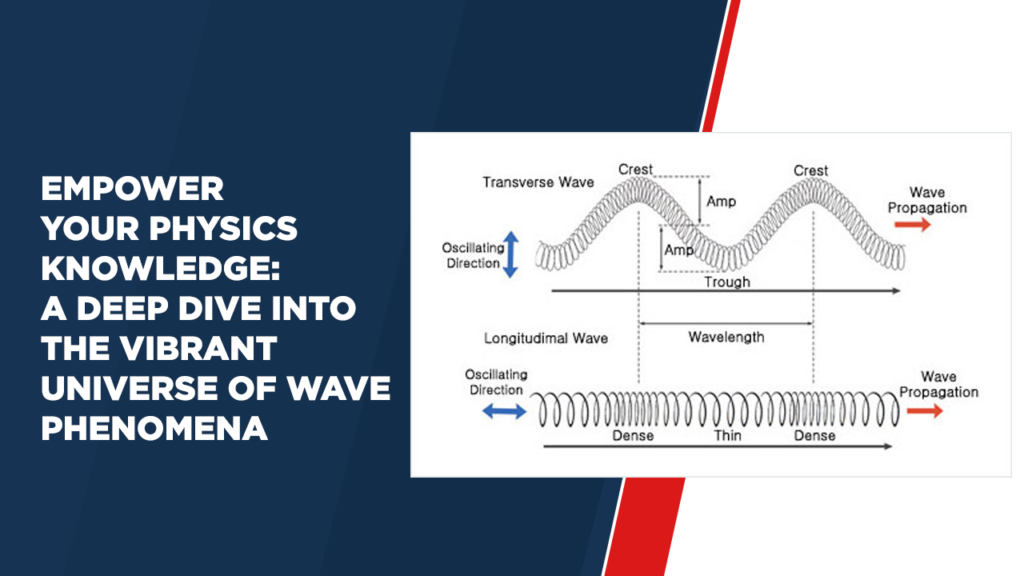Empower Your Physics Knowledge: A Deep Dive into the Vibrant Universe of Wave Phenomena
Introduction
Waves are an essential aspect of the physical world around us, shaping the way we perceive and interact with our environment. They come in various forms, each with different properties and applications. In this article, we’ll delve deeper into the fascinating field of waves, exploring different types like sound waves, electromagnetic waves, and seismic waves, while also answering the basic question: What type of wave is light?
Types of Sound Waves
Sound waves are a fundamental part of our daily lives, allowing us to communicate, enjoy music, and experience the world through our sense of hearing. There are two primary types of sound waves: longitudinal and transverse.
- Longitudinal sound waves:
These waves involve compression and rarefaction, where particles move parallel to the direction of the wave. Longitudinal waves are responsible for transmitting sound through air, liquids and solids.
2. Transverse sound waves:
Unlike longitudinal waves, transverse waves consist of particles that move perpendicular to the wave direction. Although less common, they play a role in unique sound phenomena, such as vibrations in solids.
Types of Electromagnetic Waves
Electromagnetic waves cover a broad spectrum of energy including visible light, radio waves, microwaves, and more. They all share common characteristics, including the ability to travel through vacuum, but differ in their frequencies and applications.
- Visible light waves:
These are the waves that our eyes can perceive and are responsible for the colors we see in the world around us. The visible light spectrum ranges from red to violet.
2. Radio waves:
Radio waves are used for communications, including AM and FM radio transmissions. These have relatively low frequencies and long wavelengths.
3. Microwave:
Microwaves are used in cooking, telecommunications and radar technology. Their wavelength is less than radio waves.
4. X-rays and gamma rays:
These high-energy waves are used in medical imaging and sterilization procedures because of their ability to penetrate matter.
Types of Seismic Waves
Seismic waves are produced during earthquakes and provide valuable information about the Earth’s interior. There are two primary types of seismic waves:
- Primary waves (P-waves):
These are the fastest seismic waves and can travel through solids, liquids and gases. P-waves compress and expand the material they pass through.
2. Secondary waves (S-waves):
S-waves are slower than P-waves and can travel only through solids. They cause the particles to move perpendicular to the direction of the wave.
What Type of Wave is Light?
Light is an electromagnetic wave, specifically a visible light wave. It is part of the electromagnetic spectrum and behaves as both a particle (photon) and a wave, exhibiting properties such as interference and diffraction.
Conclusion
In the world of waves, diversity reigns supreme. Sound waves, electromagnetic waves, and seismic waves each have unique characteristics and applications, from the way we listen to music to the way we explore the universe with telescopes and seismic detectors. Understanding the different types of waves is fundamental to understanding the natural world and the technology that surrounds us. So, the next time you listen to your favorite song, use a microwave, or learn about an earthquake, remember that it’s all about the fascinating world of waves.



